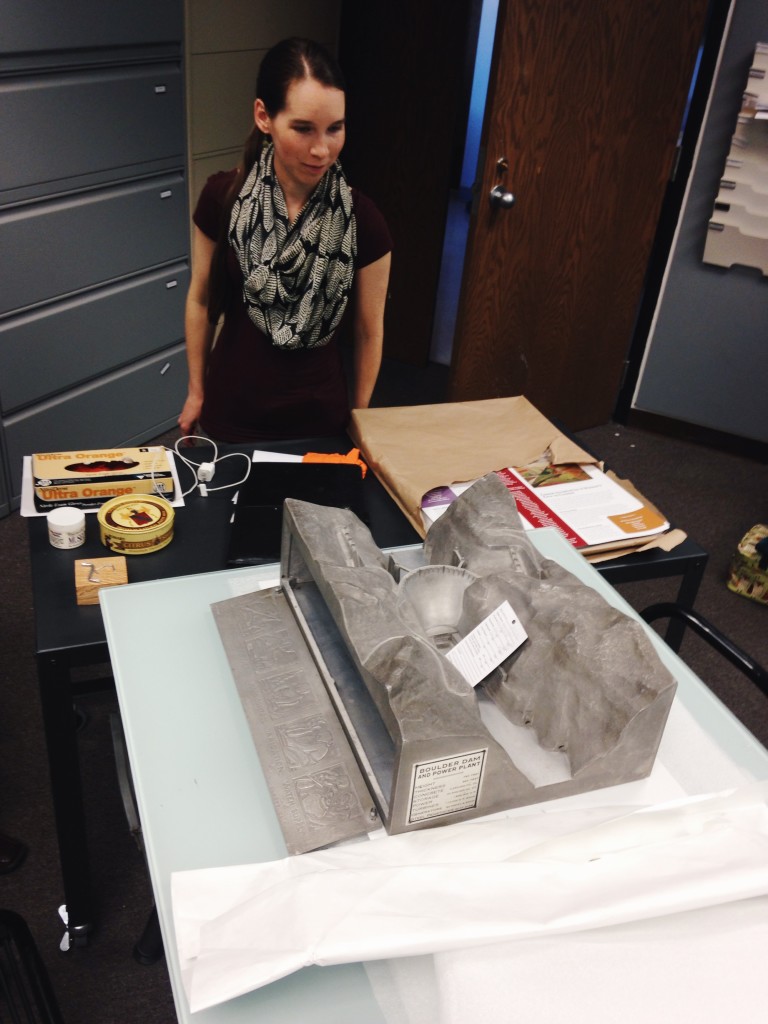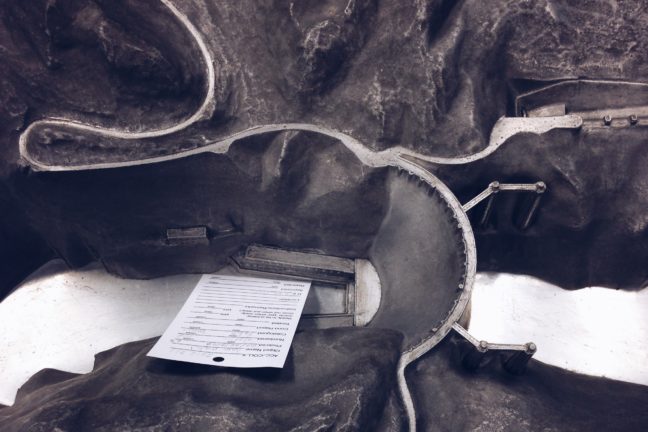 If you follow us on social media you probably saw that one of our gallery attendants had to clean a giant Plexiglas case last week. Now we are revealing what was installed inside the case: Gladys Caldwell Fisher’s Boulder Dam, 1934-1935, the last addition to Pushing Boundaries. The aluminum model is a small scale replica of the (now titled) Hoover Dam; located in the Black Canyon of the Colorado River, on the border of Nevada and Arizona.
If you follow us on social media you probably saw that one of our gallery attendants had to clean a giant Plexiglas case last week. Now we are revealing what was installed inside the case: Gladys Caldwell Fisher’s Boulder Dam, 1934-1935, the last addition to Pushing Boundaries. The aluminum model is a small scale replica of the (now titled) Hoover Dam; located in the Black Canyon of the Colorado River, on the border of Nevada and Arizona.
The Hoover Dam was the world’s biggest dam at the time of its dedication in September of 1935. Controversy surrounds the name due to the original location, Boulder Canyon. Even after the location was changed to Black Canyon it continued to be called the “Boulder Dam.” In 1930, at the start of construction, U.S. Secretary of the Interior Ray Lyman Wilbur ultimately decided to name the dam after his boss, and current president, Herbet Hoover. However, in 1933 the new Secretary of the Interior, Harold Ickes, decided the name should change back to Boulder Dam. The back and forth name usage continued until 1947 when President Harry Truman approved a congressional resolution that confirmed the name we know today.
In December 1934 Fisher was commissioned to create two small reliefs for the scale model of the Boulder Dam. The relief on the right shows an eagle with outstretched wings while the relief on the left shows a series: navigation, power, flood control, irrigation, and water supply (all the benefits the dam would provide). The commissioner was Mr. Savage, the Chief Designing Engineer of the Declamation Bureau, Denver. Fisher worked with Arnold Ronnebeck on the project and was paid $100 upon its completion in 1935. The removable panels on the side also show the ducts and pipes that run underground as well as the statistics of the dam’s production. Unfortunately, the relief panels at the Hoover Dam today are not the ones Fisher created. Further research needs to be done to discover what happened and why Fisher’s reliefs were not chosen.
Come by the gallery to see the model up close before Pushing Boundaries closes on May 1st!
Based on research done by Helen Bradley, MA expected ’17.


